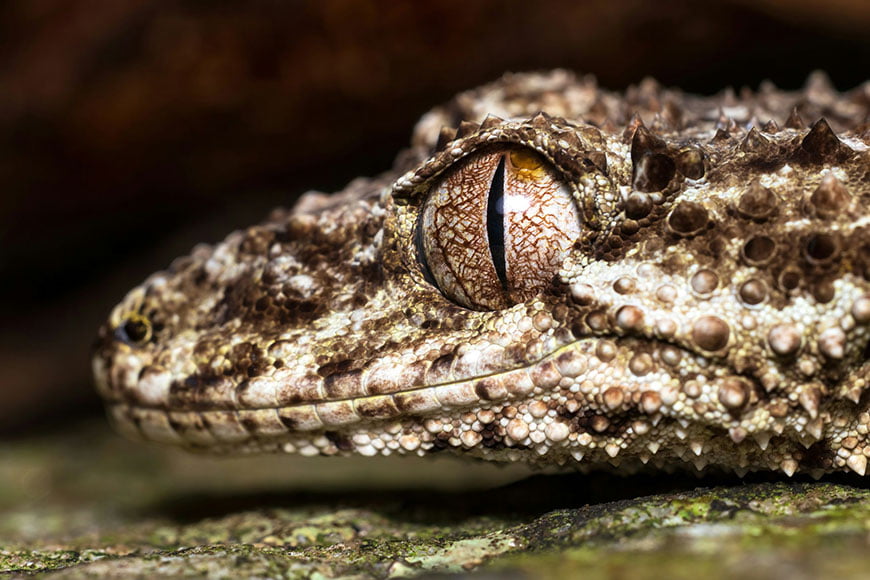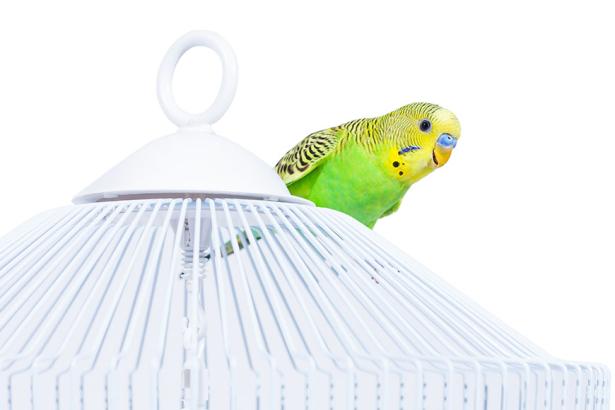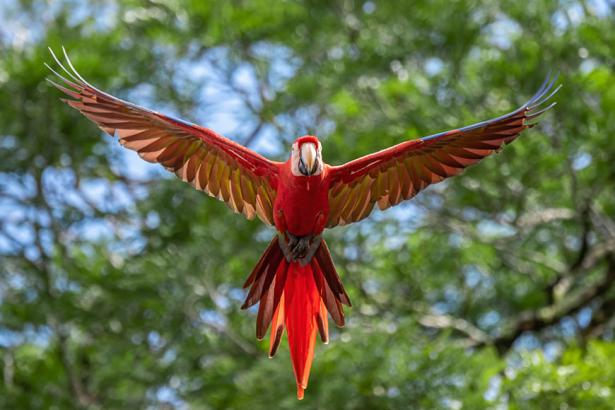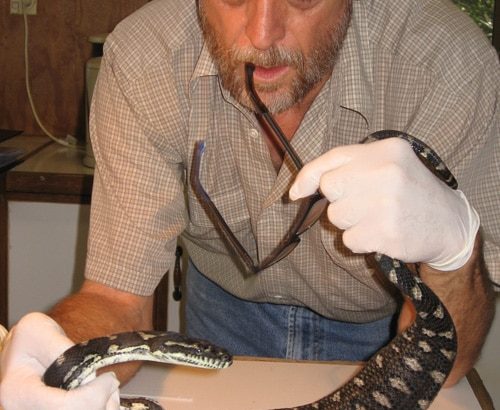Housing a pet reptile or amphibian is a responsibility that requires a thorough understanding of their specific environmental needs. Reptiles and amphibians, unlike mammals or birds, are ectothermic animals that depend on the temperature of their surroundings to regulate their body functions.
In order to provide the correct housing for these unique pets, the owner must recreate their natural environment as closely as possible so that it caters to their physiological, psychological, and behavioural necessities.
The types of reptiles and amphibians kept as pets span a wide array of species, each with distinct environmental requirements. These range from the bearded dragons and knob-tailed geckos, native to arid desert landscapes, to the various species of tree frogs, whose origins lie in the dense humidity of tropical rainforests.
Snakes such as the children’s python can be found in a range of environments, from tropical habitats to semi-arid woodlands and grasslands. Each species’ natural proclivity governs the requirements for their enclosure, not only in terms of physical dimensions but also in the provision of suitable temperature gradients, humidity levels, and lighting to mimic their natural habitats.
General Housing Requirements
The fundamental needs for reptile and amphibian housing start with a properly sized enclosure. Space is paramount, with the general rule being the larger, the better, particularly for species that require ample room to climb, explore, or swim.
Smaller species may not require expansive spaces, but enclosures should still be large enough to provide a temperature gradient, allowing the reptile to thermoregulate by moving between warmer and cooler areas.
For instance, in a desert terrarium, a heat lamp might be placed at one end, creating a hot basking spot, while the other end remains significantly cooler. Similarly, for a tropical species, a high-humidity microclimate at one end can contrast with drier conditions at the opposite end.
Another important aspect of reptile housing is the provision of a safe and secure environment. In the wild, reptiles are often prey animals, and as such, they require hiding places to feel secure.
Enclosures should include hide boxes, plants, or other structures that allow the reptile to conceal itself and manage stress levels. Remember, environmental enrichment not only provides refuge but also opportunities for physical exercise and mental stimulation, which are essential for their overall wellbeing.
Habitat Emulation
In mimicking a reptile’s natural habitat, attention must also be paid to the substrate, or the floor covering of the enclosure. The choice of substrate will depend largely on the natural habitat of the reptile species.
For instance, species from arid environments may benefit from sandy or rocky substrates that facilitate digging and mirror their natural ground conditions, while forest-dwellers might require a substrate that retains moisture to maintain adequate humidity levels. We will cover this in more depth later in the article.
Lighting Requirements
Lighting is a critical component to the health of your companion. Reptiles require a source of ultraviolet (UV) light to synthesise vitamin D3, vital for calcium metabolism and overall health. UV lighting needs vary among species and must be provided in accordance with their natural exposure to sunlight.
Tropical species typically require higher levels of UVB radiation, whereas desert dwellers may need intense UVA and UVB rays to thrive. Understanding the light spectrum and intensity that a reptile would naturally experience guides the selection of artificial and natural lighting in captivity.
Consistency in Freshwater – Types of Water Supply
Reptiles also require access to fresh, clean water. While some may drink from a bowl, others may only recognize moving water as a drinking source. Species-specific hydration needs must be met, whether through misting systems for tropical species, providing a large water bowl for soaking, or ensuring a humidity-retentive substrate.
Replicating the myriad of environmental conditions found in the wild within a domestic setting is both a challenge and a commitment. It demands in-depth research, continuous observation, and an unwavering dedication to the well-being of the pet. Achieving the delicate balance that recreates a slice of their natural world is pivotal in fostering a healthy, content, and thriving companion.
Enclosure Types
When selecting the right enclosure for a reptile or amphibian, several factors must be considered to cater to the specific needs of different species. The primary types of enclosures used for reptile housing include terrariums, vivariums, and paludariums. Each of these enclosures offers distinct features that can be advantageous depending on the species, their natural behaviours, and their individual requirements.
Terrariums
Terrariums are perhaps the most common type of enclosure for pet reptiles and are particularly suitable for terrestrial or semi-arboreal species. They are typically made of glass or plastic and offer a clear view of the reptile, which not only allows for easy observation by the owner but also facilitates the penetration of light and UV rays critical for the reptile’s health.
Glass terrariums are preferred for their durability and ease of cleaning. They can be well-ventilated and often come with a variety of lid options, which can be important for species that require higher humidity levels, such as tropical reptiles.
For example, a knob-tailed gecko, which is a desert-dwelling species, can thrive in a terrarium that has a warm and dry environment with areas for hiding and basking.
Conversely, a terrarium for a tropical species like the northern-leaf tailed gecko would need to include features that maintain higher humidity, such as a substrate that retains moisture and a misting system.
Vivariums
Vivariums are enclosures that incorporate living plants and other natural elements to create an ecosystem that closely resembles the animal’s natural habitat. These setups can be more complex and require additional maintenance but are highly beneficial for providing environmental enrichment.
Vivariums are especially advantageous for arboreal species that spend a significant amount of time in trees, as they allow for vertical space utilisation with branches and foliage. Additionally, the inclusion of live plants helps in regulating the humidity and air quality within the enclosure, which is crucial for reptiles from rainforest environments.
Tree frogs, which require a high-humidity environment with plenty of foliage for climbing and hiding, are well-suited to vivariums. The naturalistic setup not only satisfies their physical needs but also offers mental stimulation through the complex, layered environment it creates.
Paludariums
Paludariums are specialised enclosures that combine terrestrial and aquatic elements, making them ideal for semi-aquatic or aquatic reptiles.
These enclosures often have a section filled with water, alongside a land area where the reptile can bask and feed. The design of a paludarium can vary greatly depending on the needs of the species, with some requiring larger water areas and others needing more land space.
Aquatic turtles such as the eastern long-necked turtle are prime examples of reptiles that benefit from paludariums. Such setups allow these turtles to swim and dive as they would in their natural pond and river habitats, while also providing dry areas where they can rest and absorb heat and UV light.
Choosing the Right Size and Design
The size of the enclosure is critical for the health and well-being of the reptile. It should be large enough to allow for normal behaviour, such as climbing, burrowing, or swimming.
However, for active species or those that require complex environments (such as arboreal or semi-aquatic reptiles), larger enclosures are necessary to provide adequate space for exercise and exploration. Remember, when owning a reptile, no matter the size – the larger the enclosure the better.
Creating an enriched habitat for reptile pets is essential for their overall well-being. In the wild, reptiles are constantly engaging with a complex environment that offers a multitude of sensory stimuli, physical challenges, and hidden retreats.
A barren cage does not provide the mental stimulation or the physical exercise reptiles need, which can lead to lethargy, obesity, and stress-related behaviours such as excessive hiding or aggression. To promote health and natural behaviours, owners must endeavour to replicate aspects of a reptile’s natural habitat within their enclosure. Here’s how to enrich a reptile’s habitat effectively.
Natural Habitat Replication
Begin by researching the reptile’s natural environment. If it’s a tree-dwelling species from a rainforest, then vertical space and climbing apparatuses like branches or vines are important.
For desert dwellers, a more horizontal space with hiding spots like rock caves or burrows may be ideal. The goal is to mimic the reptile’s ecological niche as closely as possible within the confines of captivity.
Complex Environment Design
A complex environment is one that offers a variety of surfaces, gradients, and hiding spots. It should cater to the reptile’s instincts for climbing, burrowing, or swimming. For example, arboreal species require sturdy branches and foliage to navigate, whereas fossorial reptiles need a substrate that allows for digging and tunnelling.
A diverse enclosure offers the opportunity for physical exercise, which is paramount for muscle development and weight management.
Variety of Textures
Incorporate various textures for tactile stimulation. Rocks, bark, and different substrate types encourage exploration and interaction. For snakes, a piece of rough wood or bark can aid in the shedding process.
For lizards, a smooth, flat stone under a heat lamp can provide a warm spot for basking. Providing different textures will not only enhance the enclosure’s aesthetic but also encourage the reptile to explore and utilise its environment fully.
Hiding Spots and Retreats
Security is crucial for reptiles. In the wild, they hide from predators and retreat during unfavourable conditions. In captivity, hiding spots help them feel secure and reduce stress.
Cork bark, hollow logs, or commercial hides sized appropriately for the reptile can serve this purpose. Ensure there are enough hiding spots and that they are scattered throughout the temperature gradient, so the reptile doesn’t have to choose between feeling secure and thermoregulating properly.
Food and Foraging
Mimic natural foraging behaviours by spreading food items throughout the enclosure or by using puzzle feeders that require effort to obtain food.
This stimulates the reptile mentally and encourages natural hunting and foraging behaviour, providing both enrichment and exercise. For herbivorous species, planting edible plants within the vivarium can offer a fresh food source and the added enrichment of foraging for their food.
Water Features
For reptiles that are either semi-aquatic or those that drink regularly from standing water, adding a water feature is beneficial. This can be a simple water dish for smaller reptiles or a more complex arrangement like a waterfall or stream for larger enclosures.
Besides providing hydration, water features add humidity to the environment and can act as an enticing place for reptiles to soak or swim, emulating natural behaviours.
Change and Rotation
To prevent habituation, occasionally change the layout of the enclosure or introduce new items. This simulates the changing conditions of a natural habitat. However, changes should be made gradually and monitored carefully to ensure they don’t cause undue stress.
Some reptiles may be more sensitive to changes than others, and what works for one individual may not work for another.
Safe Introduction of Enrichment Items
When introducing any new item into the reptile’s environment, it must be safe and non-toxic. Ensure that all materials are free from sharp edges, small detachable parts, or chemicals that could be ingested or cause harm to the reptile.
Plants added to the enclosure must be non-toxic and pesticide-free as many reptiles will nibble or ingest foliage as part of their exploration.
Monitoring and Evaluation
Regularly observe the reptile’s interaction with the enrichment items. If a particular item seems to cause stress or is completely ignored, it may not be suitable for the reptile. Conversely, if an item or arrangement seems to stimulate positive behaviours, consider incorporating similar items in the future.
Incorporating environmental enrichment into a reptile’s habitat is not just about adding items to their enclosure. It’s about creating a dynamic, engaging space that stimulates their natural behaviours and instincts.
The variety and complexity of enrichment must be tailored to each species’ unique needs and behaviours, and always introduced with the reptile’s safety and health as the foremost priority. Through thoughtful environmental design and enrichment, reptile owners will significantly enhance the quality of life for their scaly companions.
Ease of Cleaning
Maintaining a clean environment is essential for the health of captive reptiles. Substrates like paper towels or newspapers are not aesthetically pleasing but are practical for quarantine enclosures due to their disposability and ease of cleaning.
Reptile carpet is reusable and easy to clean, but it needs to be washed regularly to prevent bacterial build-up. For a more naturalistic approach, fir bark or cypress mulch can be spot-cleaned and completely replaced less frequently. Whichever substrate is chosen, it should allow for easy removal of waste to prevent the proliferation of pathogens.
Risk of Ingestion
Accidental ingestion of substrate material is a real concern, especially for reptiles that strike at food, potentially swallowing substrate in the process. This can lead to impaction, a severe digestive condition where the substrate blocks the intestines.
To minimise this risk, owners can feed reptiles in a separate enclosure devoid of substrate or place food on a dish or feeding platform. While sand is often used for desert species, it is one of the most common causes of impaction, especially in younger reptiles. Alternative substrates like newspaper, reptile carpet, or stone slates can provide a safer environment.
In summary, providing appropriate housing for pet reptiles is a multifaceted and critical aspect of their care. Successful reptile husbandry is not just about meeting the basic needs of these creatures but about replicating their wild environments to the best of our abilities. By doing so, we not only ensure the physical well-being of our reptilian companions but also enrich their lives, allowing them to exhibit natural behaviours and lead fulfilling lives under our care. With dedication and informed choices, it can be a deeply rewarding experience for both the pet and the owner.
In the next article we will discuss the importance of proper reptile care and how to maintain a clean, hygienic and suitable environment to keep your reptile happy and healthy.
FAQs
Lighting is crucial for reptiles as they require UV light for synthesising vitamin D3, which is vital for calcium metabolism. The type and intensity of UV lighting depend on the reptile’s natural habitat. Desert species may require stronger UVB light compared to those from forested areas.
Use heating lamps or pads to create a temperature gradient, and for humidity, use misters, humidifiers, or substrate that retains moisture. The specific temperature and humidity levels should match the reptile’s natural habitat.
The choice of substrate should be based on the reptile’s natural environment. Some species thrive on sandy or rocky substrates, while others need moisture-retaining substrates. Be cautious about substrates that can cause impaction if ingested.
Include features like branches, rocks, hides, and foliage to mimic the reptile’s natural habitat. For arboreal species, provide vertical climbing spaces, and for burrowing species, ensure a suitable substrate depth.
While not necessary, live plants can enhance the enclosure’s environment by providing humidity, hiding spots, and a more natural setting. Ensure any plants used are safe and non-toxic to reptiles.
This depends on the species. Some reptiles may drink from a bowl, while others prefer moving water. Always provide clean, fresh water, and consider the natural drinking habits of your reptile.
Generally, it’s not advisable to house different species together due to varying environmental needs and the risk of stress, disease transmission, and aggression. Always research the compatibility of species if considering a communal setup.






2 Comments
Comments are closed.